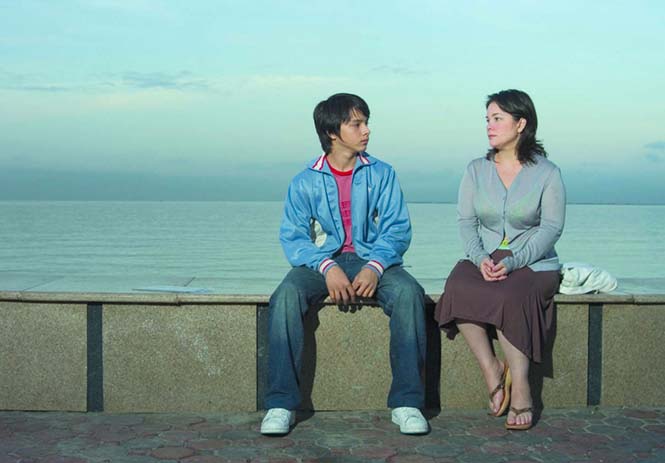Believing in the importance of dance and arts in general in the lives of every Filipino, the Cultural Center of the Philippines (CCP) embarks on another milestone project, dubbed Tara, Laro Ta(y)o, that aims to preserve what is inherently Filipino and promote the diverse Philippine dance tapestry.
Featuring six dance films, the project explores how the joyous spirit of traditional games can be woven and intertwined with the dynamism of Philippine indigenous dances. Championing the folk and indigenous arts, the CCP aims to promote traditional dances and games to young generations through these dance films.
Inspired by the traditional games of selected Philippine indigenous communities from Luzon, Visayas, and Mindanao, the featured dances are: Mali, a Dumagat traditional dance; Koirdas di la Bordon of Cuyo, Palawan; Sipit-sipit from Eastern Samar; Kikembe from Cuartero, Capiz; Kasipa sa Manggis from Marawi, Lanao del Sur; and Buwa-buwan of Butuan City, Agusan del Norte.
Comparable to agawan base, the Mali is considered the pambansang laro of the Dumagats from San Jose del Monte, Bulacan. Usually played after the pagyuyuro (a long day’s work) at night under the moon along the river, the traditional game is played with two teams, with 10 players each; one of which will be the pambato (leader). Utilizing a ball, each group must protect with all their strength and might the base assigned to them.
In the dance film directed by Roberto P. Ramirez, Jr. and choreographed by Ramirez Jr. alongside John Rick Bugas, a player named Emman shows all his strength to win the game and eventually falls in love with his female opponent named Kulot. His love languages were observed and witnessed by Kulot’s younger sister Ekang. He may not win the game but wins the heart of his love.
Played after prayers for the dead or during wakes, Koirdas di la Bordon entails players secretly passing a ring while singing the Bordon. The “It” tries to guess who has the ring. The guessing game continues until the “it” succeeds in pointing at the person who holds it. The holder of the ring becomes the new “it.”
Performed by Ramon Obusan Folkloric Group, the dance film shows the son of a bereaved family initiating the Koirdas di la Bordon to keep everyone awake and alleviate boredom throughout the night. Children eagerly join in, providing a much-needed distraction from the grief and sadness of the wake. This showed that even in times of mourning, there is still room for happiness and fun. Percival V. Carel directs and choreographs.
A lively and playful cultural expression from the Philippines, specifically in Taft, Eastern Samar, Sipit-sipit is inspired by a traditional Filipino game where players aim to hit each other’s slippers with their own.
The Samleyaw Performing Arts Group performs the choreography of its artistic director Jerry E. Mores in the film directed by Mores himself and Mark Doclotero. In the film, dancers move energetically, incorporating movements that mimic the act of tucking or placing slippers in different parts of the body. The choreography often includes rhythmic footwork, dynamic arm gestures, and joyful expressions, capturing the essence of camaraderie and competition found in the game.
Kikembe, a traditional group game from Cuartero, Capiz, is often played by children who form a circle and tangle their hands and feet. As they turn and form various formations, they would chant “Kekembe, nang kekembe/Ang barato nang karamiri/Ginsakyan ni Kapitan Kabyan/Byan, byan…. Byan.” Any player who loses focus and stops the routine will render a song or a dance as a penalty.
Directed by Jocelyn Mayo and Ramie Capuyan, the dance film features the performance of Agdahanay Folkloric Group as choreographed by Rose Hallegado and Cute Candelario. In the film, Kikembe ignites the friendship between classmates who bicker and fight.
In Kasipa sa Manggis, sipa players try to outdo one another by kicking the ball-like contraption made of rattan (sipa) and hitting the manggis that are hung on a bamboo above them. The player that can hit a manggis and make it drop to the ground gets a price.
The traditional game is mentioned in Darangen, the Maranaw epic. In the tale, mythical hero Raja Bantugan competed in kasipa sa manggis, along with other noble warriors and datus, to win the hand of a beautiful princess.
Benhur Abulencia directs the dancers of Sining Kambayoka Ensemble (SKE) who follow the choreography of Abulencia and Jear P. Lopez in the film, narrating the story of a Meranaw boy who journeys through the Kasipa games and learns the true value of family.
The Agusan Manobo and Lapakonon Manobo children often play the Buwa-buwan, a traditional outdoor game where the runners will try to outrun the “taya.” The taya will try to chase and block the runners. Hugis Dance Project of Butuan City performs the choreography of Dariel Endencia and Railey Clark Baring in the film directed by Carlito Amalla and Gerard Hechanova.
Each film is accompanied by four videos highlighting the origin, dress, music, and game behind the dances to further promote the folk and indigenous arts while invoking a deep sense of nostalgia. Maximizing the potential of modern technology, the CCP also created instructional videos and books to document unpublished dances from the different regions of the country, with materials on costumes, music, instruments, and choreographies performed by partner dance groups from Luzon, Visayas, and Mindanao.
“The long-term plan is to create a comprehensive archive of Philippine dances, ensuring that future generations will deeply understand and appreciate our culture and heritage. We aim to distribute these manuals and instructional materials to educational institutions and libraries in the Philippines,” said CCP President Kaye C. Tinga.
In partnership with the Philippine Folk Dance Society and the City Government of San Jose Del Monte, the CCP will screen the Tara, Laro Ta(y)o films on June 25, at the Convention Center, San Jose Del Monte, Bulacan. Coinciding with the launch is the 42nd National Folk Dance Workshop, slated on June 24-28.






















































































